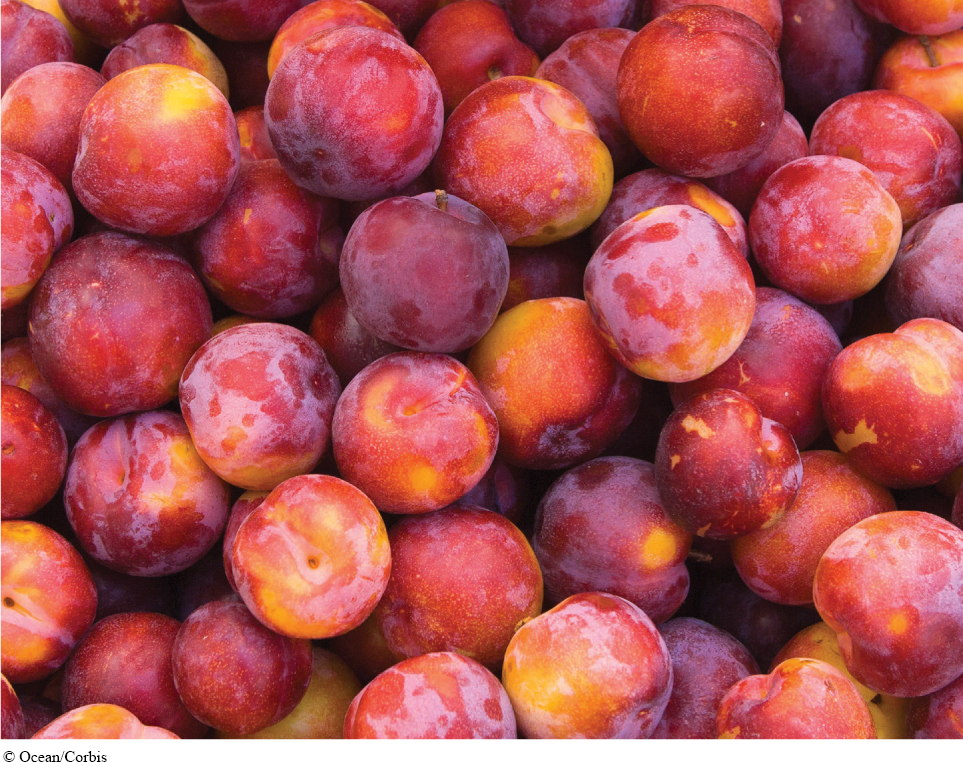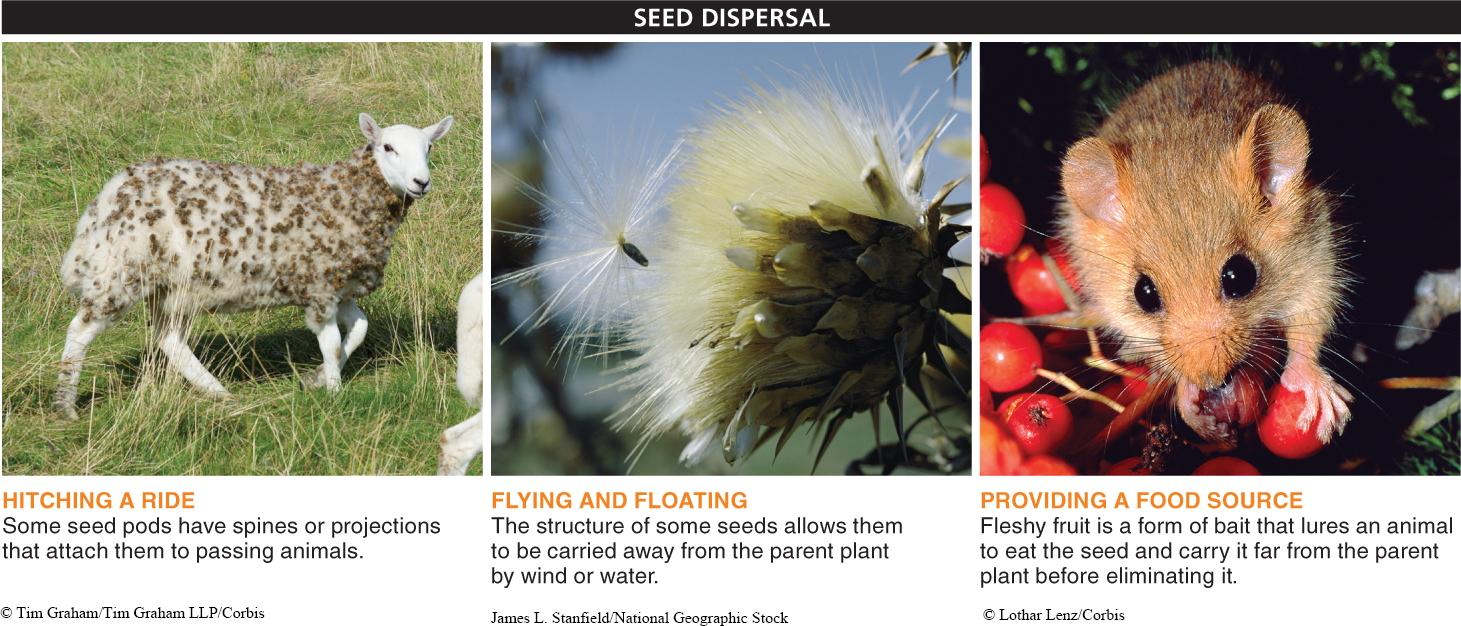12.11–12.12: Plants and animals have a love-hate relationship.

Leaving home is an inevitable part of growing up. But as difficult as it may be, imagine you had to move away but didn’t have a car or moving van—
The solution is the fruit, a structure that aids in dispersing seeds—
515
Pea pods, sunflower seeds, corn kernels, and hazelnuts are a few examples of fruits. These are “dry fruits,” and the seeds they contain are transported by wind, water, or animals (FIGURE 12-25). Many angiosperms, though, make fleshy fruits that consist of the ovary plus some additional parts of the flower. For example, the core of an apple is the ovary and the flesh of the apple is derived from adjacent parts of the flower. Blueberries, watermelons, oranges, tomatoes, and peaches are other examples of fleshy fruits.

The fleshy part of a fruit is often larger than the ovary, and an angiosperm invests a lot of energy in producing fleshy fruits. The payoff comes when an animal eats the fruit and then defecates the seeds at a location far from the parent plant. In other words, fleshy fruit is the bait that some flowering plants use to get animals to disperse their seeds.
When you look at fruits, you can see several characteristics that help this system work.
- Fruits are colorful—
red is the most common color, followed by yellow and orange. All of these colors contrast with green foliage and make fruits conspicuous. - Fruits typically taste good—
plants pour sugars into fruits, and their sweetness appeals to many animals. - Fruit is good for animals, serving as a significant source of sugar, enabling animals to produce ATP for their needs. Additionally, fruit has other nutritional value; many birds incorporate the red and yellow colors of fruits into their own color patterns, and colorful male birds are appealing to female birds. Thus, male birds that eat fruit are likely to produce a lot of offspring who also eat fruit—
a good deal for the plant.
Q
Question 12.7
Can seeds still sprout after being eaten by an animal?
Of course, there’s one more requirement to make fruit a successful way for a plant to disperse its seeds: the seeds must survive passage through the animal’s digestive tract and be able to germinate when they come out. That’s not a problem—
Seeds not only survive being eaten by animals—
TAKE-HOME MESSAGE MESSAGE 12.11
Following pollination and fertilization, plants often enlist animals to disperse their fruits, which contain the fertilized seeds, depositing them at a new location where the seedlings can grow. Fruits are made from the ovary and, occasionally, some surrounding tissue.
What characteristics of fleshy fruits aid plants in seed dispersal?